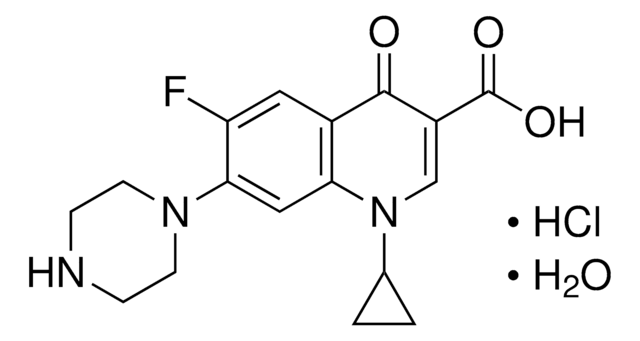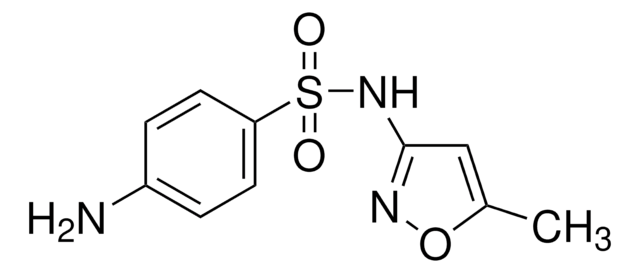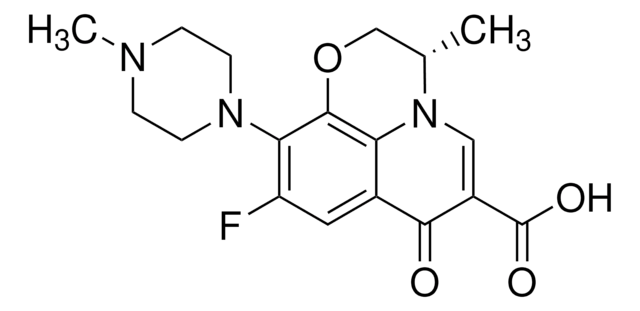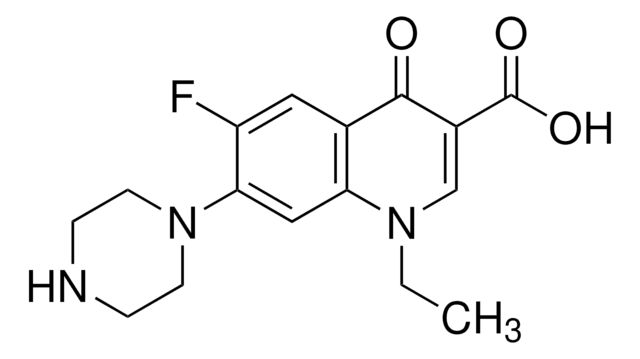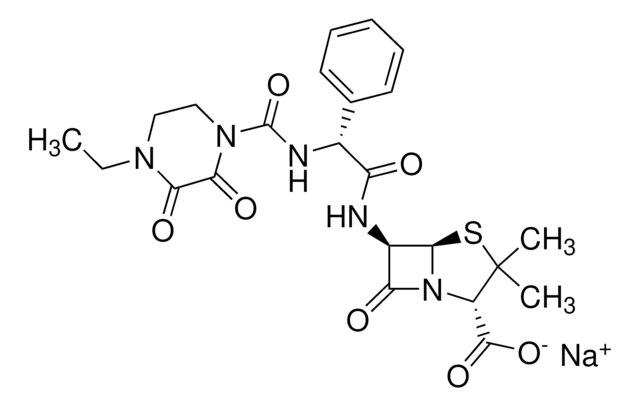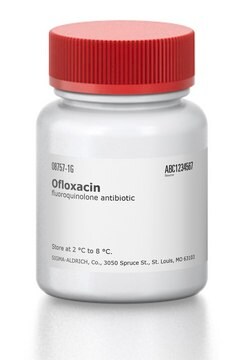17850
Ciprofloxacin
≥98% (HPLC)
Synonym(e):
1-Cyclopropyl-6-fluor-4-oxo-7-(piperazin-1-yl)-1,4-dihydroquinolin-3-carboxylsäure, Ciprobay
About This Item
Empfohlene Produkte
Agentur
EPA 1694
Qualitätsniveau
Assay
≥98% (HPLC)
Form
powder or crystals
Wirkungsspektrum von Antibiotika
Gram-negative bacteria
Gram-positive bacteria
Anwendung(en)
environmental
Wirkungsweise
DNA synthesis | interferes
enzyme | inhibits
SMILES String
OC(=O)C1=CN(C2CC2)c3cc(N4CCNCC4)c(F)cc3C1=O
InChI
1S/C17H18FN3O3/c18-13-7-11-14(8-15(13)20-5-3-19-4-6-20)21(10-1-2-10)9-12(16(11)22)17(23)24/h7-10,19H,1-6H2,(H,23,24)
InChIKey
MYSWGUAQZAJSOK-UHFFFAOYSA-N
Angaben zum Gen
human ... CYP1A2(1544) , KCNH1(3756)
rat ... Gabra1(29705)
Suchen Sie nach ähnlichen Produkten? Aufrufen Leitfaden zum Produktvergleich
Allgemeine Beschreibung
Chemische Struktur: Fluorchinolon
Anwendung
Biochem./physiol. Wirkung
Lagerklassenschlüssel
11 - Combustible Solids
WGK
WGK 2
Persönliche Schutzausrüstung
Eyeshields, Gloves, type N95 (US)
Hier finden Sie alle aktuellen Versionen:
Besitzen Sie dieses Produkt bereits?
In der Dokumentenbibliothek finden Sie die Dokumentation zu den Produkten, die Sie kürzlich erworben haben.
Kunden haben sich ebenfalls angesehen
Unser Team von Wissenschaftlern verfügt über Erfahrung in allen Forschungsbereichen einschließlich Life Science, Materialwissenschaften, chemischer Synthese, Chromatographie, Analytik und vielen mehr..
Setzen Sie sich mit dem technischen Dienst in Verbindung.
